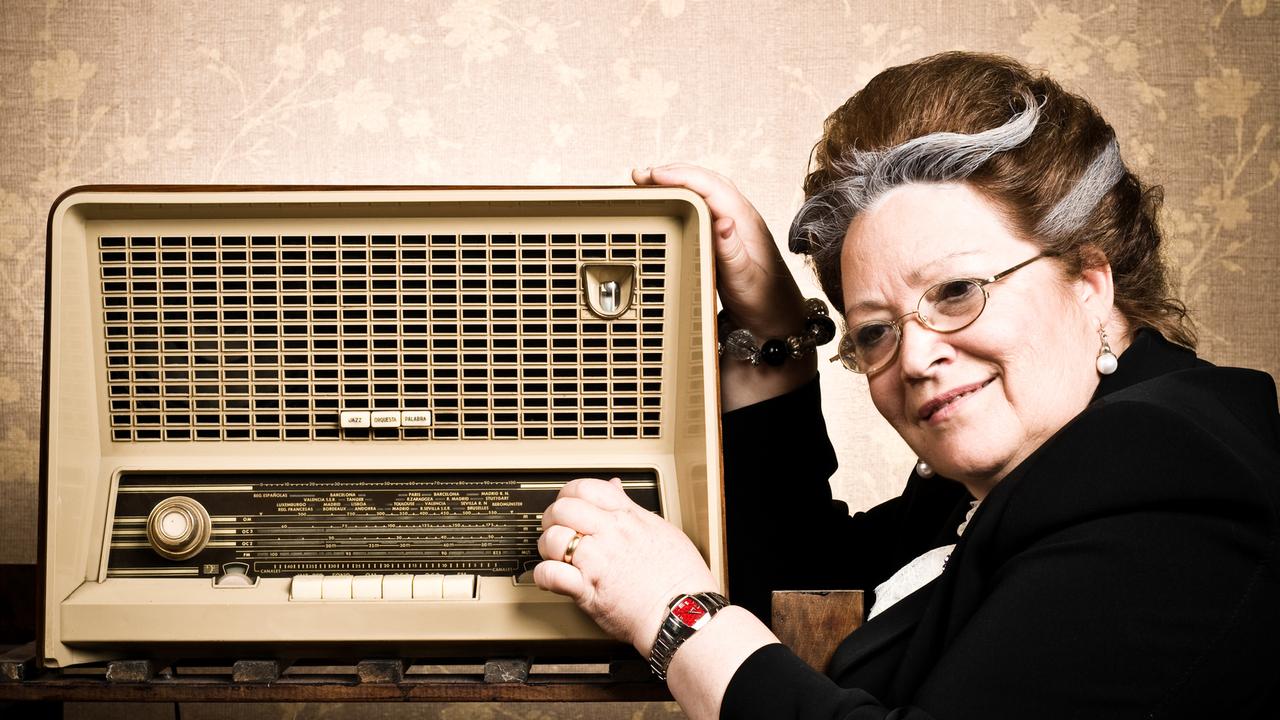Australian radio celebrates 100 years of history on the airwaves
It is 100 years since the first radio show was broadcast to Australian listeners from a Sydney station. Radio has come a long way in a century and is still as relevant today as it was in 1923

READING LEVEL: GREEN
Australian radio turns 100 today.
Radio first hit our airwaves* on November 23, 1923 from a small studio in Sydney.
It immediately fascinated Australians when they realised they could listen to sounds being made in one place and then broadcast* to other places by sending and receiving electromagnetic* waves.
The radio signal is an electronic current* moving back and forth very quickly. A transmitter* sends the signal outward through an antenna; a receiver* then picks up the signal and translates it to the sounds heard through the radio.
In 1923, families huddled around the “wireless” as it was called back then and the early models were still powered by batteries.

Commercial Radio and Audio CEO Ford Ennals said radio has come a long way in 100 years.
“Aussie kids probably find it difficult to imagine a world without social media and smart phones – but back in 1923, radio was the brand-new technology people were excited about,” he said.
“When Australian commercial radio first made it to the airwaves 100 years ago, listeners had to buy a licence to own a radio, and it was locked to just one station.
“But radio has evolved so far beyond that – now there are hundreds of radio stations as well as podcasts* — you can listen wherever and whenever.”

AUSTRALIA’S FIRST BROADCAST
At exactly 8pm on November 23, 1923, Sydneysiders gathered in their homes around radios to hear the first broadcast in Australia from the call sign 2SB (2 for NSW and SB for Sydney Broadcasting Limited). They tuned in to hear singers from the St Andrews Choir perform the musical piece The Swan.
Twelve days later, 2FC came on air playing a musical comedy show.
At the time, stations transmitted to ‘sealed radio sets’, which people bought to listen to a single station. Listeners paid for the content with a regular fee rather than relying on advertising.

LISTENERS TUNE IN ACROSS AUSTRALIA
In 1924, an Open radio system was adopted with Class A stations raising money from subscriptions* and some ads while Class B stations made money from advertising only.
Each state developed its own radio stations as follows:
Victoria: Melbourne listeners woke to the wonders of radio on 3AR on January 26 and 3LO on October 13 in 1924.
Western Australia: 6WF hit the airwaves on June 4, 1924.
South Australia: Its first station 5C aired on November 20, 1924.
Tasmania: Joined the radio ranks with 7ZL on December 18, 1924, which broadcast from The Mercury newspaper office. Tasmanians could also listen to 3LO from Melbourne.
Queensland: Brisbane’s first station 4QC aired in July 1925 and was followed a couple of weeks later by Toowomba’s 4GR.
ACT: Canberra’s first station 2CA aired on November 14, 1931 and was operated by local Jack Ryan from the back of his radio store.
NT: Darwin Radio 5DR didn’t air until February 1944. It was operated by the Army to entertain troops during World War II.

MILESTONE MOMENTS
Across the 100 years of radio Down Under, there have been some big events that helped keep Australians tuning in.
1932: ABC radio begins with 12 stations.
1934: During the Depression* in the 1930s, many people could not afford to buy a radio. So Wireless House was built in a park in the inner suburb of Glebe in Sydney, with a radio donated by Grace Brothers department store. This allowed many jobless working-class* people to sit in the park and listen to the radio. It operated from 10am to 10.15pm each day and was used until the 1960s. It is thought to be the only building of its kind in Australia and possibly in the world.

1953: The first natural disaster report airs on Australian radio. Bruce Rogerson, from 2KO Newcastle, created history by becoming the first announcer to cover a major emergency on air from a plane when he combined his radio skills and private pilot’s licence to describe the devastating 1953 floods near Maitland.
1957: Advances in technology created the portable transistor* radio, which meant people could leave their living rooms and kitchens and take their radio with them.
1958: Creation of the Top 40 music chart. This idea started in Sydney and was a copy of the US version.
1967: Listeners became part of the radio story when talkback* radio was introduced allowing everyday Australians to have their say on air. Until 1967, talkback radio was against the law because the broadcast of phone conversations was banned.
2009: Digital radio launched in Australia.

HOW HAS RADIO SURVIVED?
Radio plays an important role in Australia to this day — it entertains and informs us about daily life and the issues that matter to us in Australia. Whether we listen to music or talkback radio in bed, in the car on the way to school or work or in the kitchen or home garage, radio is a constant companion for Aussies who love listening to commentary*, opinion, tunes or sport.
It is considered by 59 per cent of Australians to be a trustworthy* source of news and current affairs, especially during emergencies.
More than 2200 hours of emergency service content is broadcast every year with 58 per cent of us listening to commercial radio to access information during bushfires, floods or other disasters.

Radio also helps the communities who listen to its stations.
More than $82 million worth of charitable contributions are made by commercial radio stations annually*. Commercial radio provides 6600 full-time jobs with 38 per cent of those in regional Australia, and helps contribute $1 billion to our economic health.
POLL
GLOSSARY
- airwaves: the radio frequencies used for broadcasting
- broadcast: transmitting a program or information by radio or TV
- electromagnetic: relating to electric currents or fields and magnetic fields
- current: the movement of an electric charge
- transmitter: a device that sends out radio or TV signals
- receiver: a device that receives radio or TV signals
- podcasts: audio files that users can stream or download and listen to on any topic
- subscriptions: an amount of money you pay regularly to receive something
- Depression: a period in the 1930s when many people around the world were out of work, hungry, or homeless
- working class: people who work for a salary, usually in manual labour
- transistor: a device that’s used to amplify or switch electrical signals and power.
- talkback: allows listeners to talk on-air to program hosts or their guests
- commentary: description of an event that is broadcast on radio or TV while the event is taking place
- trustworthy: able to be trusted and believed
- annually: every year
EXTRA READING
Super radio telescope being built in Aussie outback
Australians love ‘true blue’ homemade TV
Music in the shower is not so hot
QUICK QUIZ
1. What was another name for the radio in the 1920s?
2. Which Australian state was first to broadcast radio?
3. What was so special about Wireless House?
4. What was the first natural disaster reported live on air? How was it done?
5. How many jobs does radio provide in the city and country?
LISTEN TO THIS STORY
CLASSROOM ACTIVITIES
1. Pros and cons
What were the pros and cons of sealed radio sets? Write a list.
Time: allow at least 10 minutes to complete this activity
Curriculum Links: English, History
2. Extension
"The invention of radio was more important than television for entertainment and communication." Do you agree? Write convincing paragraphs either for or against. Use information in the story, your own ideas and maybe your research skills to help you.
Time: allow at least 30 minutes to complete this activity
Curriculum Links: English, Science, Geography
VCOP ACTIVITY
1. Wow word recycle
There are plenty of wow words (ambitious pieces of vocabulary) being used in the article. Some are in the glossary, but there might be extra ones from the article that you think are exceptional as well.
Identify all the words in the article that you think are not common words, and particularly good choices for the writer to have chosen.
Select three words you have highlighted to recycle into your own sentences.
If any of the words you identified are not in the glossary, write up your own glossary for them.

